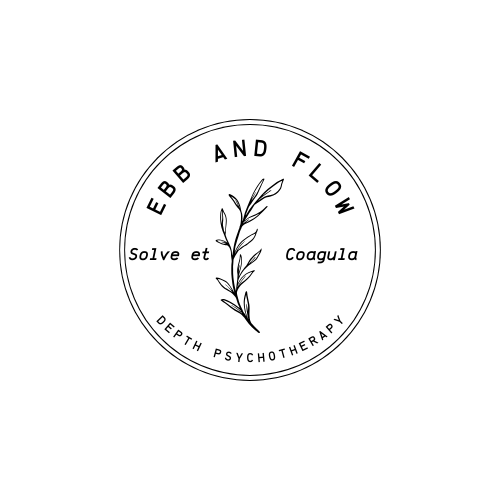Listening for and Embodying the Dream of the Earth
Michael Ebbinghaus • March 21, 2023
Awakening to Our Real Face

The depth psychology book club I have hosted over the last year will soon finish its reading of Journey to Soul Initiation
by Dr. Bill Plotkin. The values and practices described in the text are reflected in the process we have undertaken, how we came to this text in the first place, and how we are enacting its principles together as a group. Only a few weeks remain before we venture out West into the Texas deserts to cry out with great devotion and longing for vision and anchoring within the Great Spirit of the World.
And this is principally what the journey to soul initiation is. It is not an initiatory rite of passage, nor a set of practices, nor a welcoming into a human community (but a more-than-human community). It is the alignment of our ego with our ecological niche. So often at odds with it, supported by the dynamics of our culture, soul initiation is a process by which the personality transforms so as to be capable of occupying its ecological niche and becoming a true Adult and later a true Elder
who can weave together vision ecologies or soulcentric communities. The more and more of us take this journey, the more and more the collective will be in symbiotic union with what Thomas Berry calls the “Dream of the Earth.” Far from being some romanticized image of primordial dependency, awakening to the dream of the Earth means to become an active and collaborative member of the greater Earth community, a powerful agent of evolution.
Soul initiation, however, can occur spontaneously, often through sacred wounding. One does not need a manual to initiate it or facilitate it, but such guides can be invaluable on the path. I took my first vision quest a year before I had ever heard of Bill Plotkin, acting on nothing but my own intuition. I did not try to undertake anything, it happened merely as a consequence of living, just like breathing. It was during that quest that, despite my lack of intention towards receiving a vision, I was granted my first intimate encounter with an embodiment of the wild feminine, a strong, deep, and nourishing voice which took me to the shores of my pain and held me as I wept into the lake.
The final chapter of Journey to Soul Initiation
is a heavy hitter. It provides a clear vision of what is possible both individually and collectively when we allow our course to be charted by a far wider wisdom within. I want to include some excerpts from that chapter and share them with you:
“What would it look like if we really loved this world, our more-than-human world – as fully as we’re able, both individually and collectively?
If enough of us got good at living this question, we’d be well on our way to building a healthier society that is not only sustainable but life-enhancing. By getting better at loving this world, we’d also be doing all we can to foster species and human diversity, ecological health, climate stabilization, and life-enhancing governance.”
“What does it mean to love the world?
For everyone, it means to intimately know, deeply care about, and actively care for a particular place on Earth – its creatures (including its humans of all races, ages, classes, creeds, and genders), landforms, waters, soils, and air; its health, integrity, and stories. For those who have been through the journey of soul initiation, however, the single most effective way to love this world is to embody what was discovered on the journey.”
What, exactly, do we discover on the journey?
We discover our ecological niche, the place that Soul carefully designed for us. We discover that which wants to live through us. The Soul is blessed with the omniscience of interconnectedness but lacks the particular incarnation in order to carry it out. That must be carried out by all life, by the nitty-gritty particulars of sculpting, practice, work, minutiae, microbial and smooth muscle action, all the way up to the workings of the human mind and personality.
The ego is not an aberration, just a risky experiment with the potential for the highest rewards. As Plotkin reveals “Our human liability to assign and believe unhitched meanings is the origin of our ability to destroy the world.”
The severity of our situation is evident in the number of people awakening earlier and earlier from the collective dream. The dream has become so destructive that individuals can no longer participate in it meaningfully and have a felt-sense of satisfaction and security. It is clear on a primordial level that to uncritically perpetuate and prop up our culture as is means widespread ecological and democratic disaster. It is also clear that if we believe it is us (meaning the ego) that has the answer, we are just as doomed. The solution, then, is individuation and awakening into our archetypal identities based upon our strengths, skills, and soul callings, rather than our trauma, and to do this on a collective level.
I’ll continue to weave these threads through writing and narrative over the next few weeks. As of right now I envision two more articles, one centering on my own soul encounter experiences and ways of cultivating confrontations with Spirit (which many of my articles such as Soulcentric Dreamwork, Somatic Dreamwork, and Parts Work
contribute to), and another that focuses upon the delivery systems I am currently exercising and crafting to bring my Soul gifts to the world.
At this juncture, I am filled with more hope and vigor than I have ever been filled with in my life, and I only see the process amplifying in the long term, particularly as more and more of my vision ecology (or soulcentric community) begins to weave itself together.
Stay tuned!
Add your custom HTML here


